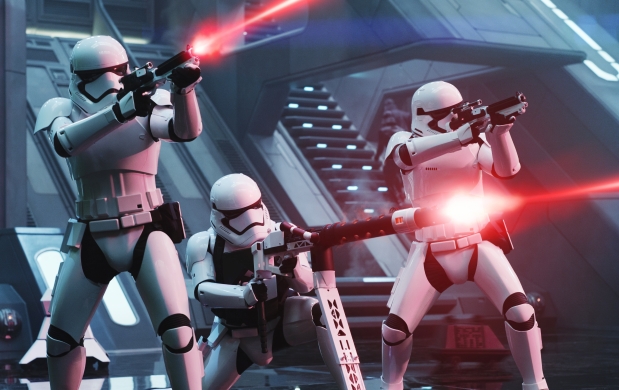Critics? What do they know? Stealth marketing, secrecy help even a bad movie succeed
The critics have spoken — and been ignored. Last weekend, as reviews for Batman v Superman: Dawn of Justice started to come in, it was clear it was bad. Maybe not Green Lantern bad, or Daredevil (the movie) bad or Fantastic Four (the remake) bad, or Elektra bad. Or Catwoman bad. (My, but there have been a lot of bad superhero movies!) But bad.
Mind you, those other five films made $186 million in their opening weekends — combined. Batman v Superman crossed that threshold handily, all by itself, on day five of its release. It’s expected to collect another $60 million or so this weekend.
Leaving aside whether the film is indeed any good, the difference may come down to something as simple as hype. Critics can’t shout louder than marketers. If Star Wars: The Force Awakens had received Dawn of Justice’s death-knell 29% rating at rottentomatoes.com (instead of the 92% it earned), it’s doubtful it would have done much damage to the film’s opening weekend haul of a quarter-billion dollars.
But everybody likes Star Wars. Visitors to rottentomatoes gave it an average score of 89%, just below what the critics thought. Over at the Internet movie database, it has a score of 8.3 out of 10.
So what’s up with Batman? The film seems to have benefited from a perfect storm of middling expectations, surprises and viewer investment.
Let’s take that last item first. Critics and the general public go to movies for very different reasons. For most people, it’s the ultimate escape from work. For the critic, it IS work. People like to say: “They couldn’t pay me to go see that movie!” But for the critics, they can and they do.
As such, Batman v Superman has all the things that drive critics crazy, but that your typical Friday-night moviegoer enjoys. Two-and-a-half hours? For the critic, that’s unpaid overtime. Subplots and sub-subplots featuring Wonder Woman, legless angry dude, Batman’s butler, dream sequences, future Justice Leaguers, African warlords, etc.? Better take notes, unless you’re there to just let it wash over you like a cooling rain. It’s much easier to enjoy a messy movie when you’re not trying to dissect it.
Audience expectations played into the film’s success as well. Sure, people were excited to see it. But “it” was a largely unknown proposition. Christopher Nolan’s Dark Knight trilogy wrapped four years ago, and 2013’s Superman reboot Man of Steel was an oddly flat affair that killed off its most interesting character (Michael Shannon’s General Zod). It had nowhere to go but up, up and away.
And that leaves us with surprises, which have proven a difficult but ultimately worthwhile marketing strategy of late. Trailers for Batman v Superman seemed to spill the beans on the story, but if you’ve seen the movie you’ll know there are twists aplenty that the ads don’t even hint at. (And the film’s final few moments are a beauty what-the-? shot.)
A one-day-early screening for Canadian critics — not even time to get those “it sucks” reviews into Friday’s papers — featured the odd inclusion of a video introduction from director Zack Snyder, pleading with us not to reveal the surprises.
The Force Awakens also benefited hugely from the surprise factor, which helped drive viewer interest in a new Star Wars chapter to a frenzy not seen since — well, since the last wholly new Star Wars chapter, The Phantom Menace, opened almost a generation ago. (Force Awakens stars Daisy Ridley and John Boyega were seven when it came out.)
A recent film that has managed the hype machine expertly, if perhaps not to the stratospheric heights of Batman v Superman, is 10 Cloverfield Lane, a followup to 2008’s surprise hit Cloverfield. A stealthy campaign didn’t even announce the film until six weeks before its March 11 release. After that, expectations were kept low by informing viewers this would not be a traditional sequel. But it was also hinted there was some kind of connection. The surprise factor was in play.
And 10 Cloverfield Lane opened to strong reviews — 90% at rottentomatoes — and $24 million at the box office. Not a huge number, but a stunning success against its relatively modest $15-million budget. (Batman v Superman is reported to have cost $250 million, plus another $150 million in marketing.)
And 10 Cloverfield Lane has since raised its box office totals to $57 million, and could add a few more million this weekend. This is the type of film where critical plaudits could conceivably help its bottom line: Reviewers have praised the strong performances, claustrophobic setting and Twilight Zone cleverness.
Of course, 10 Cloverfield Lane will ultimately be remembered as a modest win from a modest gamble. Batman v Superman is the Warner Bros. moon shot, setting up a superhero multi-film franchise to compete with Disney/Marvel’s Avengers universe.
This might even help explain some of the satisfaction viewers are getting from it — they can say they were there when it all began. Warner has Suicide Squad, Wonder Woman, Justice League (parts one and two), The Flash, Aquaman, Shazam and more mapped out, with release dates stretching into the 2020s.
In spite of critics’ thumbs-down, Dawn of Justice has dodged a bullet.
Or maybe it’s just moving faster than one.
Article Written By: Chris Knight
0

